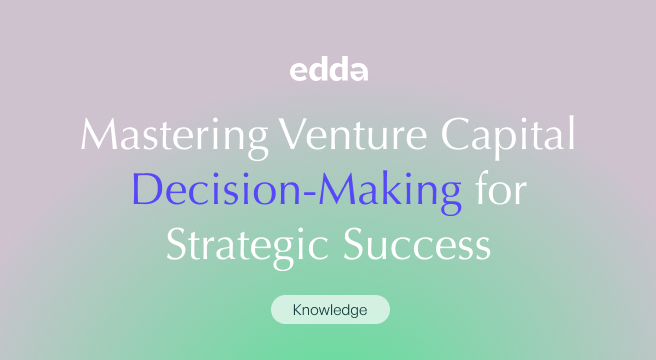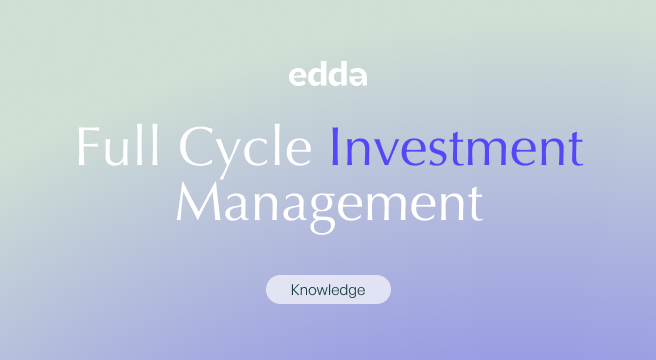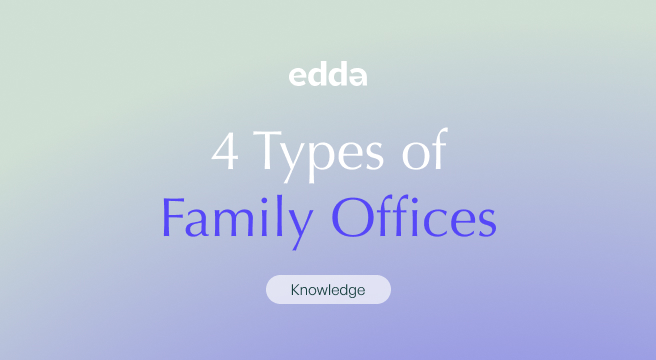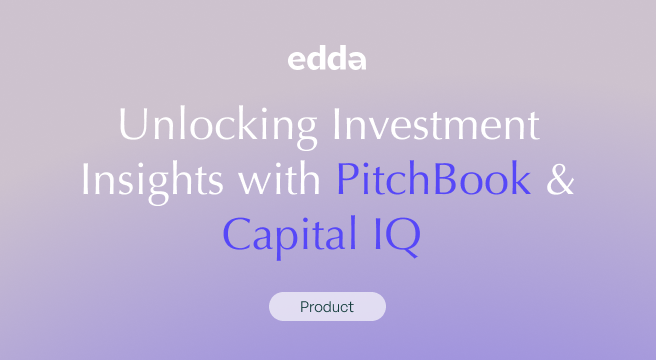In recent years, Saudi Arabia has witnessed an unprecedented influx of venture capital as it redefines its economic priorities and seeks to increasingly diversify its oil-centric economy.
This investment trend highlights the belief in the potential of Saudi entrepreneurs and their ideas to contribute significantly to the Kingdom’s economic fabric. By injecting capital into promising startups, Saudi Arabia is laying the groundwork for a future where technology, innovation, and entrepreneurship drive economic growth and sustainability.
Let’s explore how this venture capital wave is reshaping the Kingdom’s economic contours and empowering a new generation of entrepreneurs to dream big and innovate freely. In addition, discover how venture capital portfolio management tools can help VCs navigate this new terrain.
The Surge in Venture Capital in Saudi Arabia
The recent years have seen a remarkable swell in venture capital within Saudi Arabia, a development that is reshaping the entrepreneurial landscape of the Kingdom. According to MAGNiTT, In 2023 alone, the venture capital influx reached an impressive $1,383 million, illustrating a 33% increase from the preceding year.
Saudi Arabia’s venture capital scene has transitioned significantly, positioning the country as a beacon for venture investments in the Middle East and North Africa (MENA) region. Capturing an astounding 52% of the region’s total venture funding in 2023, the Kingdom has outpaced its regional counterparts and established itself as a pivotal hub for innovation financing.
The injection of substantial capital into the Kingdom’s startups has been instrumental in driving their growth and scalability. This financial backing has enabled numerous ventures to refine their offerings, expand their market reach, and, crucially, contribute to the diversification of the Saudi economy. The focus has been on the quantity of investments but also the quality and strategic relevance of these ventures to the Kingdom’s long-term economic objectives.
Strategic Alignment with Vision 2030
The remarkable ascent of venture capital in Saudi Arabia is not an isolated economic trend; it is deeply interwoven with the Kingdom’s Vision 2030, a strategic framework aimed at reducing dependency on oil, diversifying the economy, and developing public service sectors.
At the heart of this vision lies the commitment to foster innovation, entrepreneurship, and the growth of small and medium-sized enterprises (SMEs) as crucial engines for economic transformation and sustainability.
The influx of venture capital into the Saudi market is a tangible manifestation of this commitment. By providing the necessary financial support and resources, venture capital is enabling a new generation of entrepreneurs to bring innovative solutions and business models to the fore. These investments are instrumental in creating a conducive environment for startups to thrive, innovate, and challenge the status quo, contributing directly to the economic diversification goals set forth in Vision 2030.
This strategic alignment is evident in the sectors that have attracted significant venture capital, notably FinTech, E-Commerce, and Retail, among others. These sectors represent key pillars in the Kingdom’s diversification strategy, offering new avenues for economic growth beyond the traditional oil sector.
By channeling capital into these areas, Saudi Arabia is not only nurturing a competitive startup ecosystem but is also paving the way for the emergence of new industries that can contribute significantly to the national GDP.
Furthermore, the venture capital movement in Saudi Arabia is fostering a culture of innovation and risk-taking, essential for the economic dynamism envisioned in Vision 2030. This culture encourages entrepreneurs to explore new ideas, disrupt traditional industries, and create value through innovation. The strategic deployment of venture capital is not merely an economic tool but a catalyst for a broader cultural shift towards entrepreneurship and innovation across the Kingdom.
The Impact of Mega Deals
The venture capital landscape in Saudi Arabia has been notably marked by the rise of mega deals. These mega deals are a testament to the growing maturity and appeal of the Saudi startup ecosystem, attracting both local and international investors looking for high-potential investment opportunities.
In 2023, the Kingdom witnessed several mega deals, with four transactions alone amassing $879 million. These large-scale investments are pivotal for several reasons. Firstly, they provide the recipient companies with substantial resources to scale operations, expand geographically, and accelerate product development. This level of financial backing is crucial for startups aiming to transition into more established market players.
Secondly, mega deals have a multiplier effect on the ecosystem. They not only validate the market potential of the sectors they are invested in but also signal to other investors the viability and attractiveness of the market. This can lead to increased investor interest in the region, leading to more funding opportunities for other startups.
Furthermore, these significant investments contribute to job creation and economic activity, aligning with the goals of Vision 2030 to foster economic diversification and employment. By enabling companies to scale, mega deals facilitate the development of new industries and the expansion of existing ones, contributing to the broadening of the economic base.
The sectors that have particularly benefited from mega deals, such as FinTech and E-Commerce, are strategic to Saudi Arabia’s diversification plans. Investments in these areas are about building the infrastructure for a digital economy, enhancing financial inclusion, and providing innovative services to the population.
Sectoral Contributions to Economic Diversification
Two sectors that stand out in this transformative phase are FinTech and E-Commerce/Retail, both of which have received significant attention and investment.
FinTech: A Catalyst for Financial Innovation
FinTech has emerged as the leading sector in attracting venture capital, accounting for 51% of the total capital deployed in the Kingdom in 2023. This surge in investment is fueling a wave of financial innovation, from digital payments and banking solutions to financial management platforms, contributing to the modernization of the financial services industry.
The substantial funding rounds in companies like Tabby and Tamara underscore the growing confidence in FinTech’s potential to revolutionize how financial services are delivered and accessed in the region. These investments support the Vision 2030 goal of financial inclusion by making financial services more accessible to the broader population.
E-Commerce/Retail: Redefining Consumer Dynamics
The E-Commerce and Retail sector has also captured a significant share of venture capital, with 31% of the funding directed towards transforming the retail landscape of the Kingdom. This investment is enabling a shift towards online shopping platforms, supported by innovative logistics and payment solutions that enhance the consumer experience.
Mega deals in companies like Floward and Nana are indicative of the sector’s growth potential and its role in fostering a vibrant digital economy. These investments support the development of robust e-commerce ecosystems that not only provide convenience and choice to consumers but also open up new entrepreneurial opportunities and contribute to job creation.
Strategic Implications for Economic Diversification
The targeted investment in these sectors aligns with Saudi Arabia’s strategic objectives to build a diversified, knowledge-based economy. By nurturing these high-growth areas, venture capital is directly contributing to the development of new economic pillars that reduce the Kingdom’s reliance on oil.
Moreover, the growth in these sectors encourages the development of ancillary services and industries, such as digital infrastructure, cybersecurity, and logistics, further broadening the economic diversification efforts.
The success and expansion of FinTech and E-Commerce/Retail also have significant implications for other sectors, driving digital transformation and innovation across the board. This cross-sectoral impact is essential for creating a holistic and sustainable economic ecosystem that supports long-term growth and competitiveness.
Challenges & Opportunities for VCs
The surge in venture capital in Saudi Arabia presents a wealth of opportunities as well as challenges for VCs. Understanding the nuances of the Kingdom’s investment landscape is vital for VCs wanting to ensure the long-term impact of their Saudi investments.
Saudi investments present VCs with many opportunities:
Digital Transformation: The Kingdom’s emphasis on digital infrastructure presents vast opportunities for tech startups and investors. Areas such as artificial intelligence, blockchain, and IoT are ripe for exploration and investment.
Regional Leadership: Saudi Arabia’s venture capital growth positions it as a leader in the MENA region. This offers a unique opportunity to set benchmarks, share best practices, and attract international investments and partnerships.
Sectoral Expansion: Beyond FinTech and E-Commerce, sectors like healthcare, education, and renewable energy offer untapped potential for venture capital, aligned with the Kingdom’s diversification and development goals.
Global Connectivity: The increasing attractiveness of Saudi Arabia’s venture market can foster stronger global connectivity, attracting foreign investors and entrepreneurs, and facilitating cross-border collaborations and market expansions.
However, to effectively capitalize on these opportunities, VCs must be prepared for some potential challenges:
Regulatory Environment: As the venture capital ecosystem expands, ensuring a supportive regulatory framework remains a challenge. Regulations need to evolve continuously to address the fast-paced nature of startups and venture capital, balancing protection and innovation.
Market Readiness: For certain sectors, the market’s readiness to adopt new technologies and innovations can pose challenges. Driving consumer and business adoption is critical for the success of venture-backed startups.
Talent Development: The demand for skilled talent in emerging sectors outpaces supply, highlighting the need for education and training programs to nurture local talent and attract global expertise.
Exit Opportunities: Developing a mature market for exits, through IPOs or acquisitions, is essential for the ecosystem’s health. Ensuring viable exit paths is crucial for investor confidence and the recycling of capital back into the ecosystem.
By capitalizing on these opportunities with the help of software venture capital tools, the Kingdom can further solidify its position as a vibrant hub for entrepreneurship and innovation in the region and beyond.
Leveraging Edda’s VC Deal Flow Software
In Saudi Arabia’s dynamic economy, Edda’s venture capital deal flow software is essential for optimizing venture capital initiatives and fostering startup expansion. It provides comprehensive deal flow management, enabling investors to efficiently sift through and track investment opportunities.
For VCs, Edda offers venture capital portfolio management software and a sophisticated deal flow CRM system, crucial for managing growth and investor relations in line with Vision 2030’s objectives. Additionally, Edda’s analytics and collaboration features support key sectors like FinTech and E-Commerce, facilitating data-driven decisions and teamwork.
Edda’s software venture capital suite ensures the effective deployment of venture capital for enduring economic development within Saudi Arabia’s rapidly changing market.









